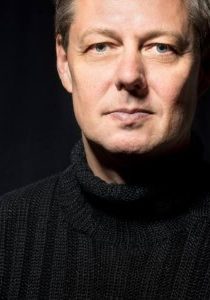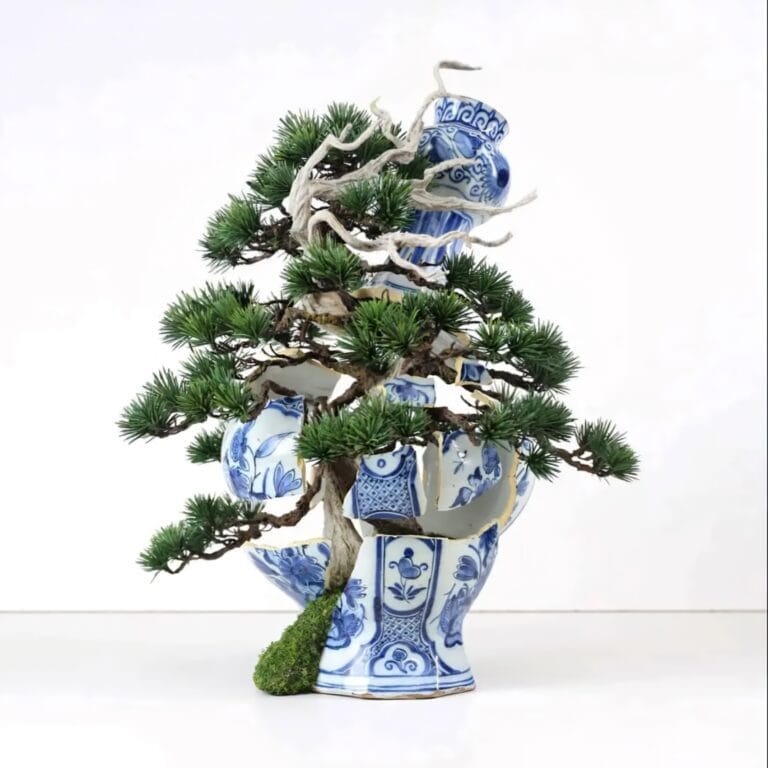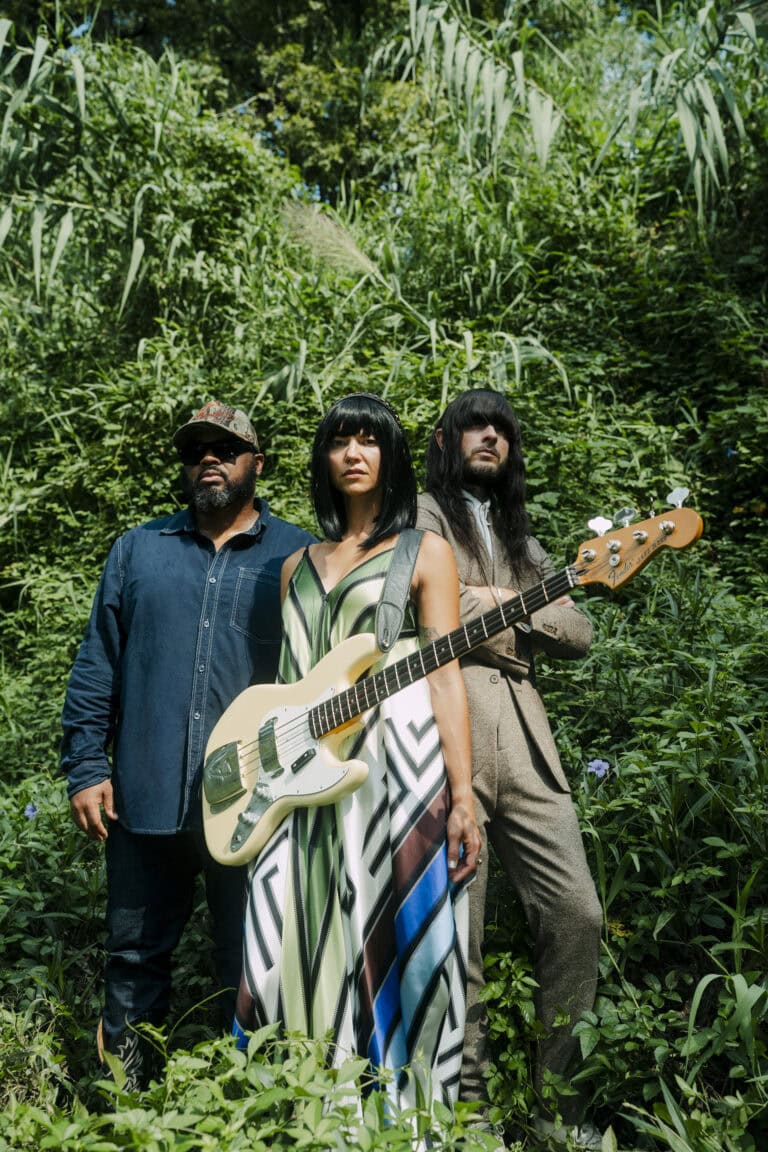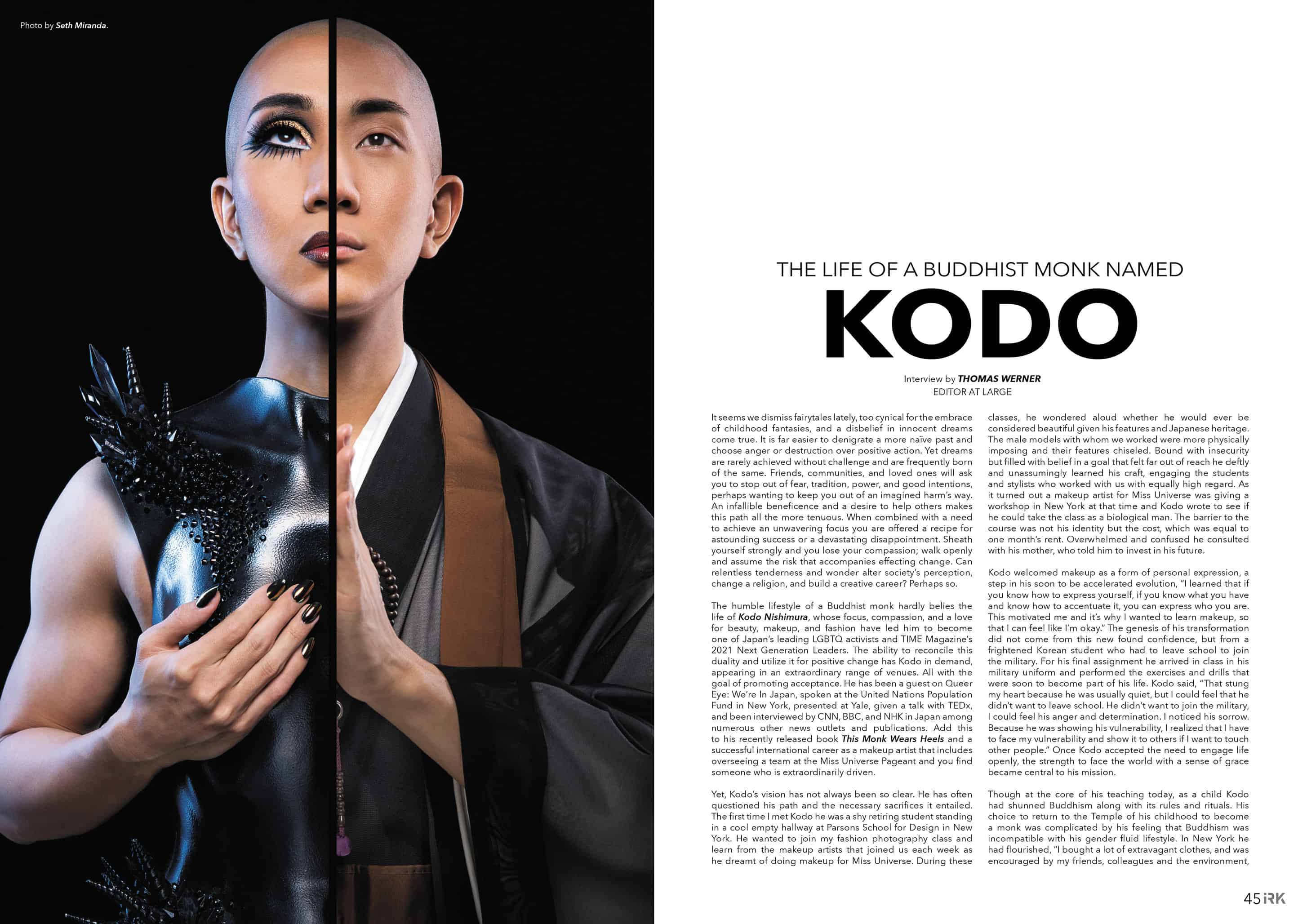
IRK PRIDE: The Life Of Buddhist Monk Named KODO
Thomas Werner

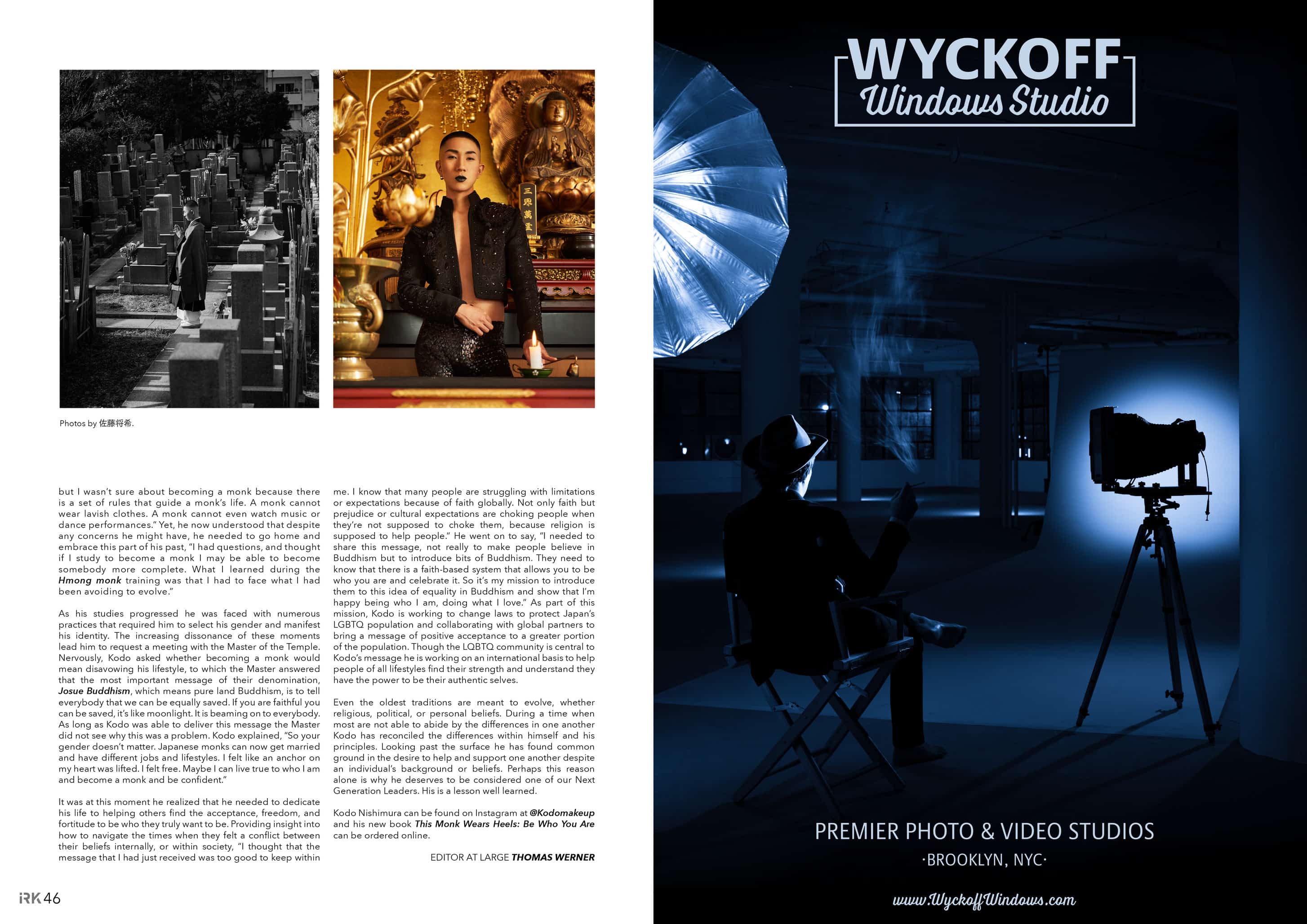
It seems we dismiss fairytales lately, too cynical for the embrace of childhood fantasies, and a disbelief in innocent dreams come true. It is far easier to denigrate a more naïve past and choose anger or destruction over positive action. Yet dreams are rarely achieved without challenge and are frequently born of the same. Friends, communities, and loved ones will ask you to stop out of fear, tradition, power, and good intentions, perhaps wanting to keep you out of an imagined harm’s way. An infallible beneficence and a desire to help others makes this path all the more tenuous. When combined with a need to achieve an unwavering focus you are offered a recipe for astounding success or a devastating disappointment. Sheath yourself strongly and you lose your compassion; walk openly and assume the risk that accompanies effecting change. Can relentless tenderness and wonder alter society’s perception, change a religion, and build a creative career? Perhaps so.
The humble lifestyle of a Buddhist monk hardly belies the life of Kodo Nishimura, whose focus, compassion, and a love for beauty, makeup, and fashion have led him to become one of Japan’s leading LGBTQ activists and TIME Magazine’s 2021 Next Generation Leaders. The ability to reconcile this duality and utilize it for positive change has Kodo in demand, appearing in an extraordinary range of venues. All with the goal of promoting acceptance. He has been a guest on Queer Eye: We’re In Japan, spoken at the United Nations Population Fund in New York, presented at Yale, given a talk with TEDx, and been interviewed by CNN, BBC, and NHK in Japan among numerous other news outlets and publications. Add this to his recently released book This Monk Wears Heels and a successful international career as a makeup artist that includes overseeing a team at the Miss Universe Pageant and you find someone who is extraordinarily driven.
Yet, Kodo’s vision has not always been so clear. He has often questioned his path and the necessary sacrifices it entailed.The first time I met Kodo he was a shy retiring student standing
in a cool empty hallway at Parsons School for Design in New York. He wanted to join my fashion photography class and learn from the makeup artists that joined us each week as he dreamt of doing makeup for Miss Universe. During these classes, he wondered aloud whether he would ever be considered beautiful given his features and Japanese heritage. The male models with whom we worked were more physically imposing and their features chiseled. Bound with insecurity but filled with belief in a goal that felt far out of reach he deftly and unassumingly learned his craft, engaging the students and stylists who worked with us with equally high regard. As it turned out a makeup artist for Miss Universe was giving a workshop in New York at that time and Kodo wrote to see if he could take the class as a biological man. The barrier to the
course was not his identity but the cost, which was equal to one month’s rent. Overwhelmed and confused he consulted with his mother, who told him to invest in his future.
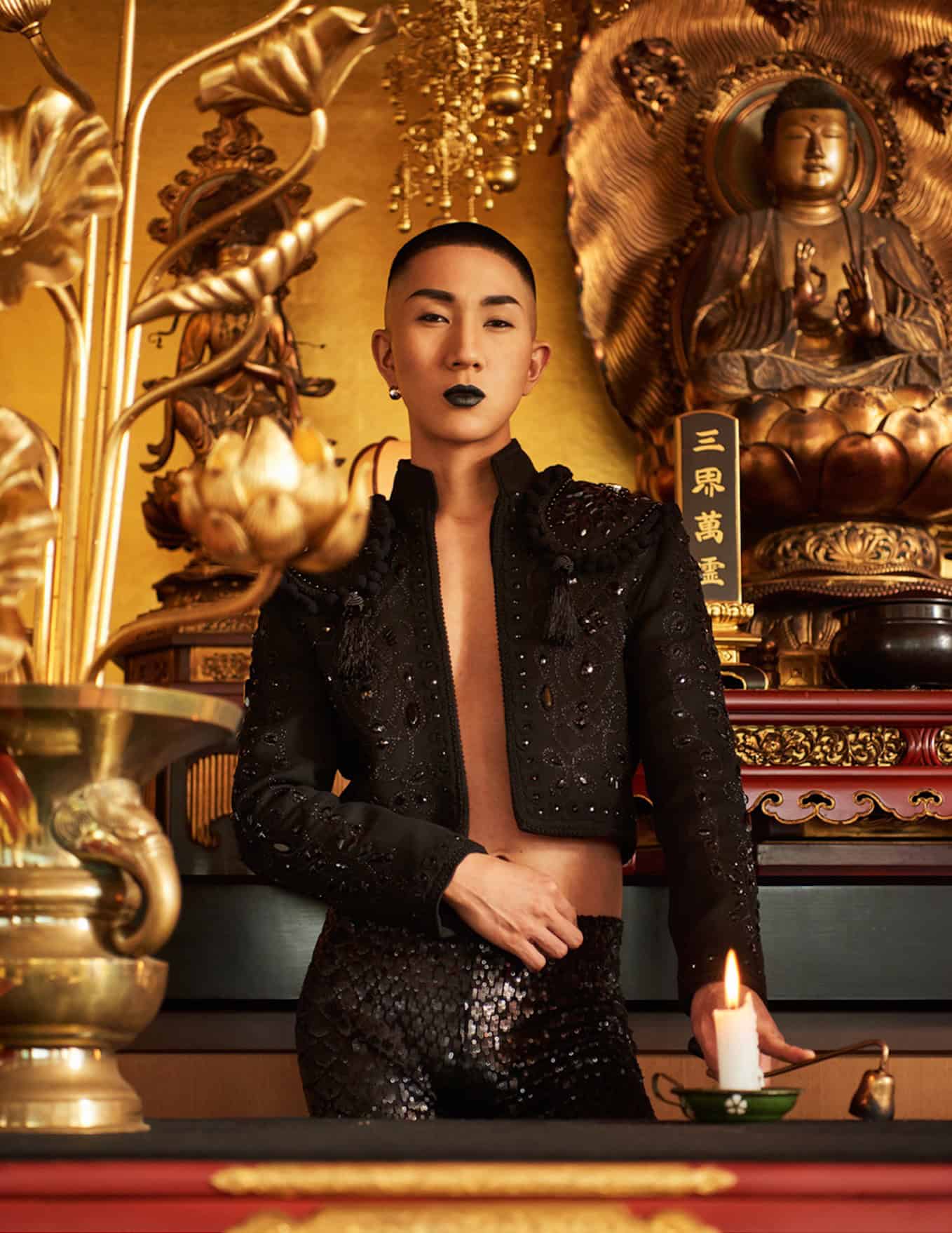
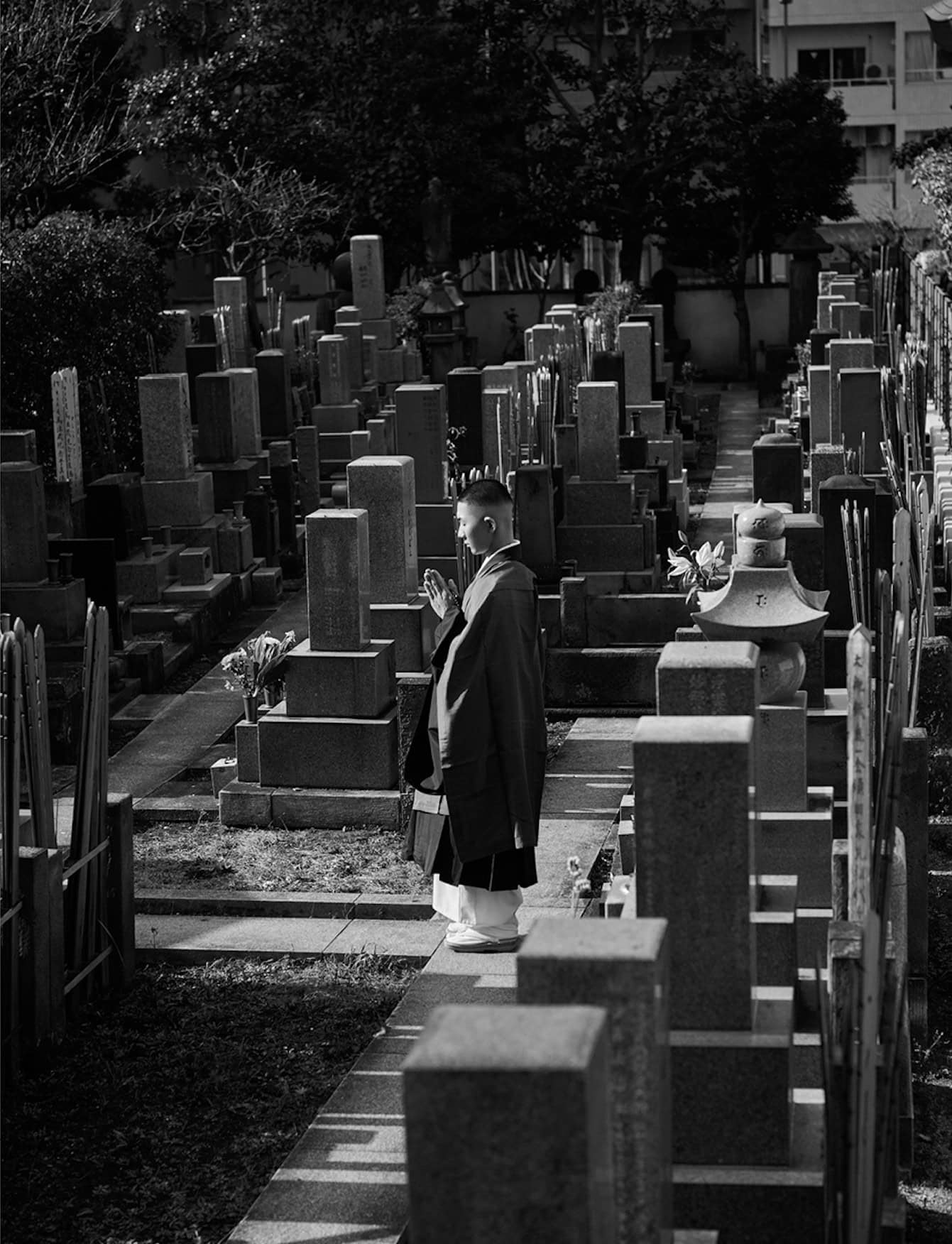
Kodo welcomed makeup as a form of personal expression, a step in his soon to be accelerated evolution, “I learned that if you know how to express yourself, if you know what you have and know how to accentuate it, you can express who you are. This motivated me and it’s why I wanted to learn makeup, so that I can feel like I’m okay.” The genesis of his transformation did not come from this new found confidence, but from a frightened Korean student who had to leave school to join the military. For his final assignment he arrived in class in his military uniform and performed the exercises and drills that were soon to become part of his life. Kodo said, “That stung my heart because he was usually quiet, but I could feel that he didn’t want to leave school. He didn’t want to join the military, I could feel his anger and determination. I noticed his sorrow. Because he was showing his vulnerability, I realized that I have to face my vulnerability and show it to others if I want to touch other people.” Once Kodo accepted the need to engage life openly, the strength to face the world with a sense of grace became central to his mission.
Though at the core of his teaching today, as a child Kodo had shunned Buddhism along with its rules and rituals. His choice to return to the Temple of his childhood to become a monk was complicated by his feeling that Buddhism was incompatible with his gender fluid lifestyle. In New York he had flourished, “I bought a lot of extravagant clothes, and was encouraged by my friends, colleagues and the environment, but I wasn’t sure about becoming a monk because there is a set of rules that guide a monk’s life. A monk cannot wear lavish clothes. A monk cannot even watch music or dance performances.” Yet, he now understood that despite any concerns he might have, he needed to go home and embrace this part of his past, “I had questions, and thought if I study to become a monk I may be able to become somebody more complete. What I learned during the Hmong monk training was that I had to face what I had been avoiding to evolve.”
As his studies progressed he was faced with numerous practices that required him to select his gender and manifest his identity. The increasing dissonance of these moments lead him to request a meeting with the Master of the Temple. Nervously, Kodo asked whether becoming a monk would mean disavowing his lifestyle, to which the Master answered that the most important message of their denomination, Josue Buddhism, which means pure land Buddhism, is to tell everybody that we can be equally saved. If you are faithful you can be saved, it’s like moonlight. It is beaming on to everybody. As long as Kodo was able to deliver this message the Master did not see why this was a problem. Kodo explained, “So your gender doesn’t matter. Japanese monks can now get married and have different jobs and lifestyles. I felt like an anchor on my heart was lifted. I felt free. Maybe I can live true to who I am and become a monk and be confident.”
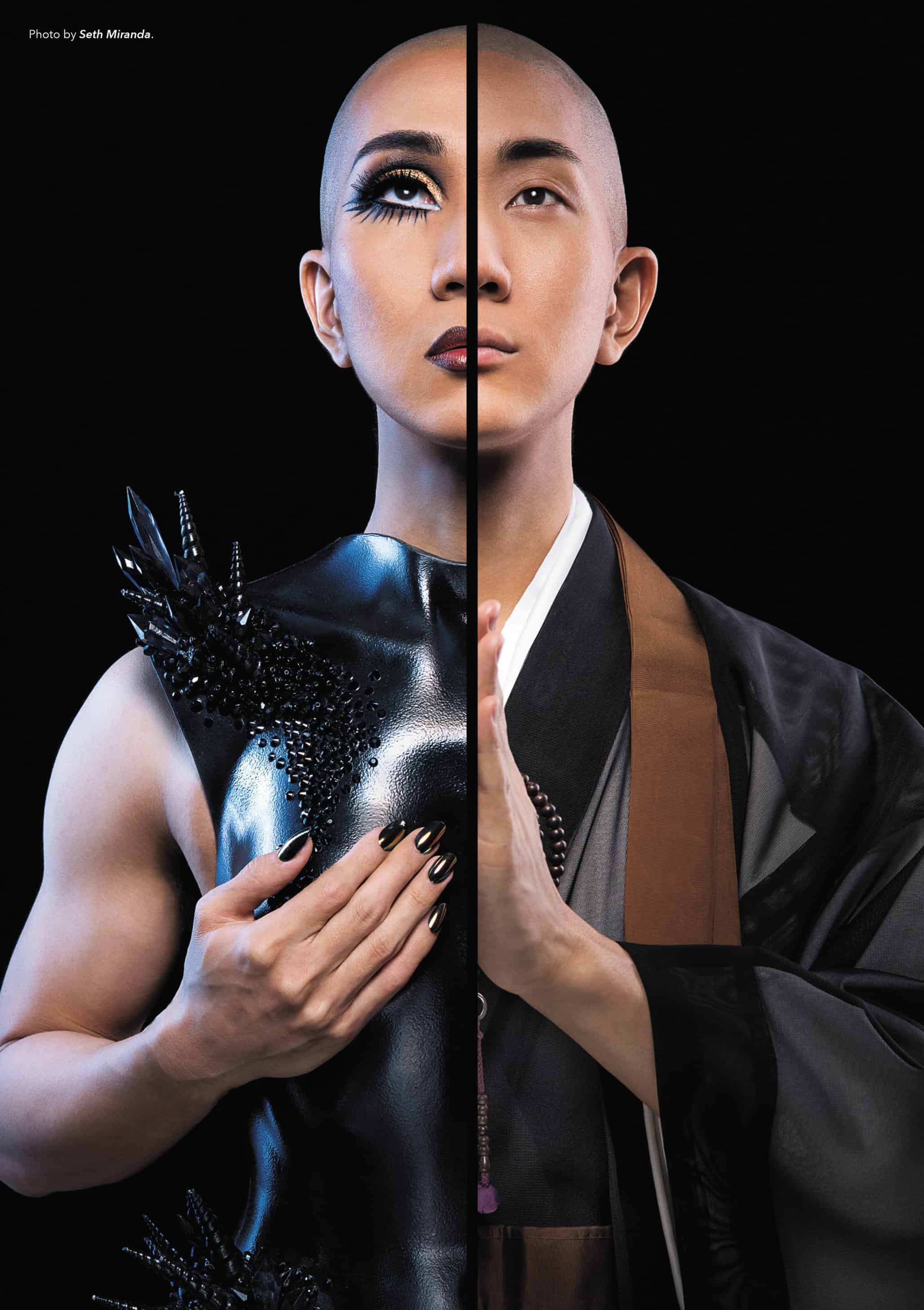
Photo by Seth Miranda
It was at this moment he realized that he needed to dedicate his life to helping others find the acceptance, freedom, and fortitude to be who they truly want to be. Providing insight into how to navigate the times when they felt a conflict between their beliefs internally, or within society, “I thought that the message that I had just received was too good to keep within me. I know that many people are struggling with limitations or expectations because of faith globally. Not only faith but prejudice or cultural expectations are choking people when they’re not supposed to choke them, because religion is supposed to help people.“ He went on to say, “I needed to share this message, not really to make people believe in Buddhism but to introduce bits of Buddhism. They need to know that there is a faith-based system that allows you to be who you are and celebrate it. So it’s my mission to introduce them to this idea of equality in Buddhism and show that I’m happy being who I am, doing what I love.” As part of this mission, Kodo is working to change laws to protect Japan’s LGBTQ population and collaborating with global partners to bring a message of positive acceptance to a greater portion of the population. Though the LQBTQ community is central to Kodo’s message he is working on an international basis to help people of all lifestyles find their strength and understand they have the power to be their authentic selves.
Even the oldest traditions are meant to evolve, whether religious, political, or personal beliefs. During a time when most are not able to abide by the differences in one another Kodo has reconciled the differences within himself and his principles. Looking past the surface he has found common ground in the desire to help and support one another despite an individual’s background or beliefs. Perhaps this reason alone is why he deserves to be considered one of our Next Generation Leaders. His is a lesson well learned.
Kodo Nishimura can be found on instagram at @kodomakeup and his new book This Monk Wears Heels: Be Who You Are can be ordered online.
Share this post
Thomas is the author of the books The Business of Fine Art Photography, Routledge, New York, and The Fashion Image for Bloomsbury Publishing, London, with an upcoming book co-authored with Microsoft BING and AI team leader Derrick Connell due out in early 2026. He is also an Editor at Large for IRKmagazine, Board Member for the Santa Fe Council CENTER for Photographic Art, and past Photography Program Director at Parsons School of Design in New York. He is the former owner of Thomas Werner Gallery in Manhattan’s Chelsea Art District, and a former National Board member and New York Chapter President for the American Society of Media Photographers. As well as a former Advisory Board Member for Ithaca College’s Executive Education Program, contributor to Adobe’s Lightroom Academy, and a photography consultant for COACH, among others.
Werner led a team developing a media and literacy website for the United Nations Alliance of Civilizations/UNESCO and was a recurring instructor for the United Nations Education First Summer School. From 2005 – 2019 he worked with the United States Department of State on cultural projects in Russia partnering with 32 cultural, educational, and governmental organizations to develop projects in 29 cities. As an exhibiting artist Thomas was represented by galleries in New York and Los Angeles, and his work reviewed in The New Yorker Magazine.
Currently a creative consultant, Thomas works one on one with students, creatives, businesses, cultural institutions, and not for profits, helping them with career development, team management, innovation, education, professional practices, and the development of effective communication across multiple media platforms.
For fourteen years his research was Russia centric spending an average of 30 days a year in the country. The focus was the introduction of contemporary education methodologies, and the development of creative cultures within the country. Russian partners have included; The State Hermitage Museum, the National Center of Contemporary Art, Perm Regional Government, The Moscow Biennale for Young Art, National Centre of Photography for the Russian Federation, The Central State Archive of Film, Photographic and Phonographic Documents, The Moscow Biennale, The Pro Arte Foundation, and others. He has curated exhibitions in the United States and abroad, including seven co-curated exhibitions at the State Hermitage Museum in Saint Petersburg, Russia. His private collection of Russian photographs and artifacts have been exhibited internationally.
Thomaswernerprojects.com @Thomaswernerprojects IG
Read Next

